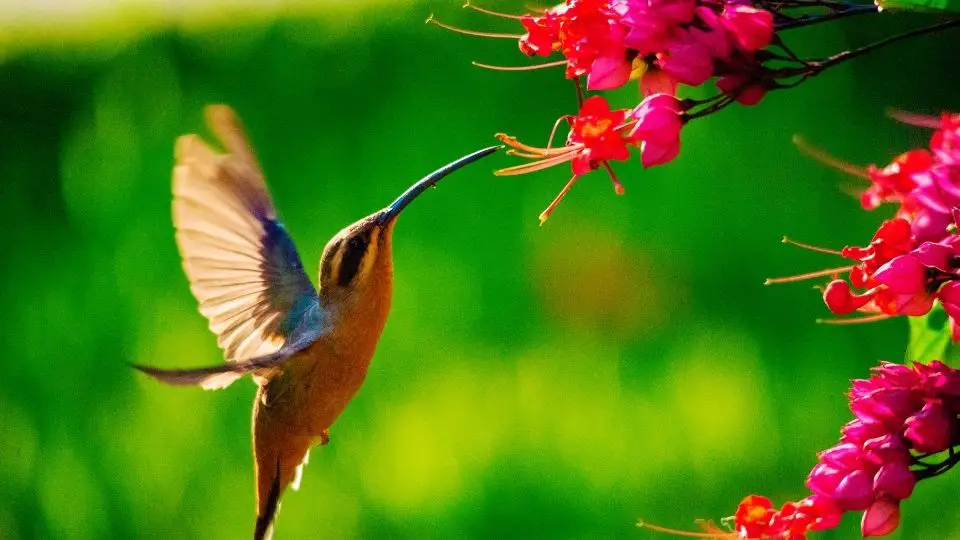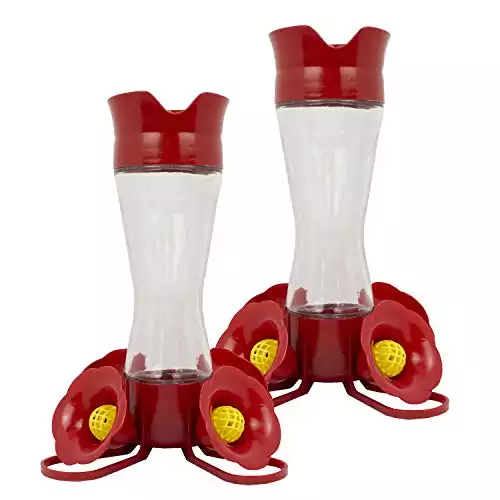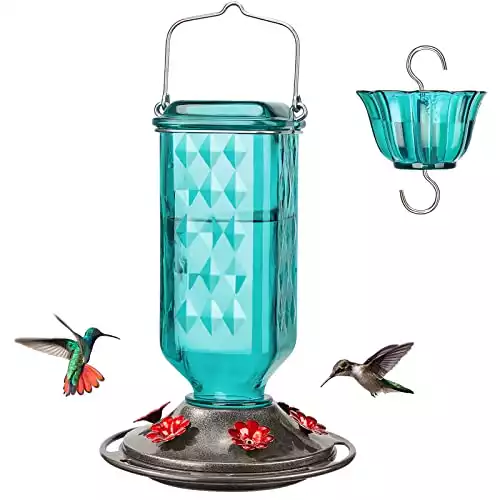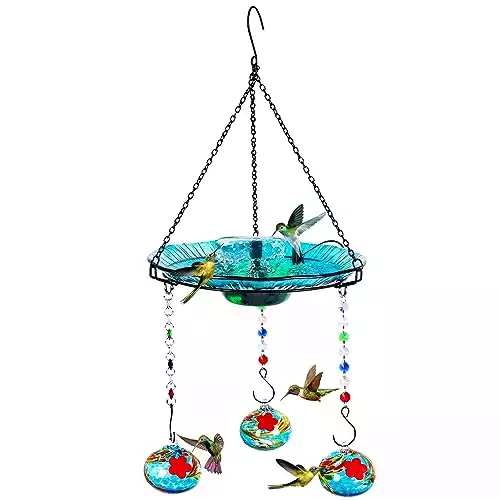This guide will help you learn how to attract hummingbirds to your garden or backyard by providing information on what hummingbirds eat and drink, what types of feeders work best for them, where you can place hummingbirds feeders in your yard, and much more!
You can easily attract hummingbirds by offering them sweet water (homemade nectar), water to bathe in, and a place to sit and relax.
But at first, you need to practice bird-watching with these tiny birds so you can have a better grasp of their behavior. Notice them and how they behave so you know which species they are part of. Read about each and everyone so that you can spot them easily. Every hummingbird species has its own sound – for example, Anna’s hummingbirds have a specific sound that you can’t mistake for anything else.
Once you know a thing or two, you can start planning to create a hummingbird garden that is perfect for them. Hummingbirds are not your regular backyard birds; their appearance can impress even bird enthusiasts, and they‘re gentle and sweet creatures. Luckily, it’s not that hard to tempt these hummers.

In this guide, we’ll cover everything from creating an environment perfect for attracting hummingbirds to what kinds of flowers and plants they like best (and which ones they dislike).
We’ll also discuss the best ways to attract hummingbirds by providing food and water, as well as tips for making sure that the birds stay healthy and happy in your yard – So that you can enjoy watching them fly around while they pollinate your plants and feed off of nectar from flowers!
The most important thing to consider is to think like a hummingbird. I can assure you it’ll be a win in the end.
Table of Contents
What do hummingbirds like?
Hummingbirds are attracted to tubular flowers like honeysuckle and trumpet vine, as well as Native flowers - for example, the Ruby-throated Hummingbird likes bergamot and cardinal flowers. You’ll see them around flowering plants - Hummingbirds are pollinators, meaning they have a critical role in these flowers’ life.
Hummingbirds are attracted to bright colors – so they are drawn to vividly colored flowers. The red color is their favorite one – so if you want to attract a hummer, make sure to have plenty of red plants in your flower garden. If that’s not the case, put a red ribbon on their feeder to attract their attention. But no matter what, you should also ensure that any other food sources or objects in your garden do not contain any red dye or other additives that might harm the birds – they can be toxic to them.
Hummingbirds’ primary food sources include nectar, which comes from petunias, salvia, impatiens, bee balm, and columbine. Besides that, they frequently eat small insects and spiders as an essential source of protein.

Ways to attract hummingbirds to your yard
The best way to attract a hummingbird is by offering it some good treats and a place to relax – and lastly, by respecting them and protecting them from other creatures or dangers! But let’s get more specific:
Hummingbird Habitat and Environment
- Scatter as many native plants as possible – put them in pots or hanging baskets, or plant them in the ground. Keep Annuals and perennials around.
- Avoid using pesticides on your plants – I know it’s easier said than done, but there are other, more natural ways of getting rid of pests (if it’s the case). You can use white vinegar, or other natural pesticides provided with research.
- If you stumble upon spider webs, don‘t ruin them – it‘s the primary construction material hummingbirds use in their nest building.
Hummingbird Food Sources
- Make some homemade nectar recipe by adding one part white sugar to 4 parts water – essentially, you are making sugar water.
- Avoid food coloring or sweeteners when making any homemade food for these hummers. They prefer natural ingredients.
- Offer your hummingbird warmth and fresh nectar during the winter months, so they can rest and gather more energy.
- Put a
hummingbird feeder in sight and keep it neat – Bird feeders should be clean. Always remember to feed hummingbirds regularly and empty the leftovers. You should ensure that your hummingbird nectar feeders are kept free from dust, mold, or mildew. You can clean them easily with hot water and soap, but do it regularly and rinse thoroughly before refilling them with nectar or sugar water again.
Water and Bird Baths
- Place a water source near the feeder – Hummingbirds love water – sprinklers, rivers, fountains, waterfalls, mists, and sprays; anything flowing, moving, and sprinkling. But perhaps the best idea is to create a birdbath for them – their private swimming pool.
Safeguard your Visiting Hummingbirds
- Dress your windows with curtains or something reflective to ensure that the hummingbirds can avoid collisions with the glass.
- Give hummingbirds space – don’t stay in their face all the time, as they may become shy and leave.
- Have patience.
Make sure to protect hummingbirds from other predators – Hummers enjoy sweets and hanging around the hummingbird feeders whenever they get the chance – but these are the places other not-so-friendly creatures hang around too.
Make sure you steer wasps away from hummingbirds because they can hurt them. One way you can do that is to get a bee-proof feeder that’s not yellow and clean it regularly. Also, you can steer ants away with ant moat.
Our Recommendations For Attracting Hummingbirds
Final thoughts
Now that you know these tips and tricks to attract hummingbirds go out there and enjoy the company of these beautiful birds. Just remember to give them space when necessary and always accommodate their needs. All that care and patience will pay off in the end.




